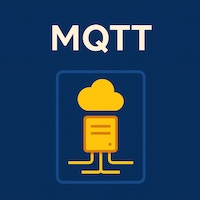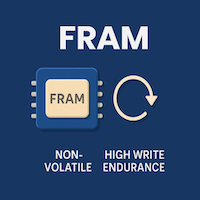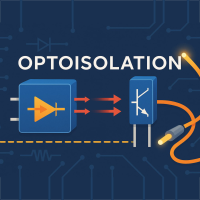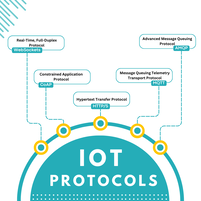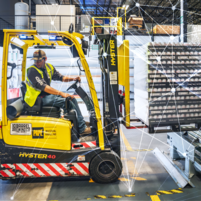What is IoT?

Self-driving cars, smart houses, and smart speakers are just a few examples of how this cutting-edge technology is being used in the real world. Developing DX (digital transformation), which is now garnering attention, is a major factor in this. Big data and artificial intelligence are also important issues.
Even if you've heard of the phrase "Internet of Things," you'll be surprised to learn that only a small fraction of people really understand what it means and how it works.
What is IoT?
"Internet of Things" is the abbreviation for "IoT." As digital technology and communication technology have advanced so rapidly in the last two decades, mobile devices such as smartphones and tablets are now able to connect to the Internet almost as easily as a personal computer did only a couple of decades ago.
For example, the Internet of Things (IoT) is becoming more popular as a way to link everyday objects to the internet.
M2M devices cannot connect to the internet and must interact with other machines through sensor networks and other ways. On the other hand, the internet is available to all devices. Internet of Things (IoT) devices may connect with one other, allowing information to be exchanged through the internet.
A broad range of sectors and disciplines may benefit from the IoT Display because of its ability to measure and operate goods from afar and allow objects to communicate with one another.
What is the History of the Internet of Things?
Telemetry on Mont-Blanc
One of the earliest events marking the start of the IoT is set in the telemetry experiments that took place in the 19th century.
In particular, it should be noted that in 1874 a group of French scientists traveled to the top of Mont Blanc to install a series of IoT Sensors to collect meteorological data such as temperature, wind direction, and snow thickness, among others.

Nikola Tesla and Alan Turing
Nikola Tesla was a visionary in numerous scientific fields and M2M (Machine to Machine) technology, becoming one of the great protagonists of wireless communications. As early as 1926, he began to talk about global connectivity and the interconnectedness of everything, even using the expression "great brain."
In the same way, some of the publications made by Alan Turing, considered one of the fathers of computer science and precursor of modern computing, is important in the field of IoT. Thus, in some of his articles from the year 1950, he stated that there would be a need in the future to provide intelligence and provide communication capabilities to sensor devices.
The arrival of the ARPANET
In the 1960s and 1970s, the first communications protocols appeared, which would lay the foundations to give life to what we know today as the Internet.
These protocols were initially used for military and academic use, highlighting the time when the United States Department of Defense developed the ARPANET network. Thanks to this network, it is possible to connect different research centers, and in 1982 an object was connected to the ARPANET for the first time, corresponding to a Coca-Cola dispensing machine.
In addition, the transformations that occurred in the coming years regarding the ARPANET resulted in the appearance of the Internet.
The internet revolution
After the arrival of the Internet in the 1990s, there was a trend to connect objects. This is how an object is connected to the Internet for the first time at an event in the United States. A toaster that could be turned on and off remotely is considered the first IoT device.
Subsequently, a series of innovations were produced, among which the first camera connected online and the first portable camera connected to the web stand out.
The 2000s
Of course, starting in the 2000s, the greatest revolution took place regarding the origin and history of the Internet Of Things, due to the popularization of cellular wireless connectivity or WiFi, which is why in 2009, the term "Internet of Things" emerged, introduced by Professor Kevon Ashton.
In this way, new technologies and concepts have begun to emerge, highlighting the exponential growth that the IoT will show in the coming years.
Likewise, the combination of technologies such as artificial intelligence, machine learning, or big data allows us to get even more out of IoT.
As observed throughout the article, the IoT has experienced remarkable progress over the years, improving its functionalities and providing very beneficial opportunities for businesses and users.
What Are Some Examples of IoT Devices?
To understand IoT devices, you first need to know what "IoT" itself means. To put it more easily, it means that "things other than personal computers can be connected to the Internet."
Before the release of smartphones, only personal computers could connect to the Internet, but with the development of technology, it has become possible to connect from smartphones and home appliances. These technologies and mechanisms are collectively called IoT.
In today's world of IT technology, there are countless IOT Devices. Smartphones, PCs, tablets, etc., are the most familiar and easy-to-understand IoT devices.
What Are the Technologies Used in IoT?
The new batch of processors
One of the requirements of the Internet of things is that the devices - we will see their mission later - must be small, and we knew that the processors had to change from what we knew before. Let's say 'classic' computer processors are not worth it. It has to be something much smaller and with less consumption. It does not matter if they are simple or not very powerful, what prevails above all are those two points.
Smartphone CPUs and their progress in recent years, together with the already existing SoC model, have aided much. ARM solutions meet expectations: they are tiny, and while not particularly powerful in comparison to other chips on the market, they fulfill the needs.
ARM has a huge catalog of SoCs on the market, with the best-known product being its smartphone SoCs. But the Cortex-A are not the only ones, and together with them, the Cortex-R and Cortex-M are ideal for IoT devices. In both cases, we are talking about 32-bit RISC processors in which, as always happens, ARM designs them but does not manufacture them; Other third-party companies are in charge of this phase.
While Cortex-Rs are integrated into devices such as hard drives or in industries such as the automotive industry, Cortex-Ms are better known due to their usefulness in end devices closer to the user. For example, thermostats, loudspeakers, ovens, or personal quantifiers take advantage of current models.
Sensors, as essential as they are invisible
The CPU and platform are in charge of managing the data, but it must originate from other sources, such as sensors. It is the hardware component that interacts with our technology and the environment in order to capture the data we desire.
In the past, electronics was very limited to an almost purely professional field, but the arrival of Arduino has allowed anyone to take their first steps. To a large extent, the low cost of the components and the enormous catalog of accessories that we have available has helped.
Looking only at the category of sensors in the official store, we will find a lot of elements, including the simplest buttons, ultrasonic, light, or distance sensors. Let's open the range to other stores. We will find touch sensors, accelerometers, tilt, potentiometers, humidity and temperature, altitude, pressure... almost anything we can imagine that can measure 'something' is in Arduino.
If we leave the Arduino world, it is usual that many of the companies behind the IoT have the ability to design and manufacture their own sensors, so their possibilities are limitless. As new needs are studied in the market, sensors will be created to satisfy them conveniently.
Low power communication
The information is already on a little computer, but it isn't powerful enough to handle it rapidly. What are you going to do? Transfer the data to another computer over a communication connection.
There are two parts to this. Many old communication protocols are still in use in IoT, and further enhancements will be critical. Local network connections via Ethernet, for example, or wireless transmission via mobile connectivity, depending on the needs of each place.
However, new protocols have been developed specifically for the IoT and the communication of devices amongst them across small distances. NFC, also known as Bluetooth 4.0, is one example. Its last designation, LE, stands for 'Low Energy,' It was created with low-battery systems in mind, such as smart bracelets.
Because of the high energy consumption of these components, the energy aspect has been a source of contention in communications for many years, and designers and manufacturers are currently working to improve it. This attention to consumption will be linked to future communication protocols, such as LiFi, which allows data to be transmitted using light.
How Does IoT Work?
Objects targeted by IoT are equipped with cameras, sensors, and wireless communication to detect the state and movement of objects and acquire data. The basic mechanism of IoT is to transmit the obtained information to people and things via the Internet.
What is Industrial IoT or IIOT?
Internet of Things (IoT) is a word that refers to a network of "things" in the context of "industrial" when the terms are combined (Internet of Things). Using a network to link industrial computers, different pieces of equipment, and so on may improve both productivity and visualization in the workplace.
Industry 4.0, often known as the Fourth Industrial Revolution, must be taken into account while talking about the Internet of Things (IIOT). The Fourth Industrial Revolution will, according to many, be enabled by IIOT. There are three significant advances that stand out in the history of the Industrial Revolution: the mechanization of the light industry through the use of coal fuel; the mechanization of heavy industry through the use of oil and electricity; and the automation of basic labor through the use of computers. The way it should be done has evolved.
What About Security in IoT and IIOT?
In the manufacturing, logistics, and infrastructure industries, Industrial Networking control systems (ICS), which control and manage computer equipment and facilities, play an important role in supporting the business. Recently, IT / OT integration, including ICS, has progressed, and an example of introducing IIoT that collects and stores data acquired from programmable logic controllers (PLCs) and sensors of equipment and facilities on a server and performs analysis processing on an analysis platform on the cloud.
It is also increasing. For example, based on the information obtained by IIoT, we have put into practical use a mechanism that monitors the operating status of equipment and facilities and uses it as a sign of failure and controls the number of production from supply and demand forecasts to help improve production efficiency. Many companies have it.
What are the Benefits of the Internet of Things (IoT) and IIOT for businesses?
Reduction of manufacturing cost, improvement of product value.
With the advancement of IIoT, the following efficiency of management work can be realized.
- Manufacturing Engineering Management
- Safety management of factory equipment
- Product quality management
- Production control
- Inventory control
- Circulation management
With IIoT, it will be possible to efficiently acquire and utilize the data required for each management task, and even automation will be possible.
In addition, by utilizing IIoT, time loss such as maintenance and inspection of production equipment and maintenance can be reduced. You can expect to improve the efficiency of each work process on-site, eliminate bottlenecks, and improve productivity.
Supply chain optimization
Especially in the industrial field, manufacturing companies can expect to optimize the supply chain.
By utilizing IIoT, things related to all industrial fields can be connected to the network so that the entire supply chain can be visualized. Once each process in the supply chain is visualized, it is possible to quantify the operating efficiency of each process and automatically detect surplus inventory.
By identifying and addressing bottlenecks in the supply chain, you can optimize your supply chain.
Promoting innovation
One of the potential benefits of using IIoT is the promotion of innovation. While IIoT tends to focus on improving efficiency in the field, it also has the potential to add value to products and promote innovation.
For example, to meet consumers' diversified needs, it may be possible to provide personalized functions and specifications for each product.
Seeing things previously invisible, such as supply chain optimization, can be a catalyst for creating new value in products and businesses. One of the notable benefits of IIoT is its great potential to promote innovation.
Increasing demand for remote monitoring
With the increasing need to check the operational status of homes, offices, vehicles, factories, aircraft, and construction material equipment without dispatching technicians to the field, IoT is providing remote product monitoring and Is indispensable for remote services.
Service to people who cannot meet
If you want to avoid face-to-face or if face-to-face is prohibited, IoT technology allows healthcare professionals to diagnose patient health and provide counseling and other services remotely. It can be applied to other industries such as education (post-pandemic online lessons), customer service, and retail.
Increasing demand for automation
When a pandemic occured, factories and distribution centers needed to continue operations with a small number of people due to social distancing. The return to normal operations is gradually performed and new in such operations. IoT systems require a swift response when an infection spreads. Still, IoT systems maintain a social distance without compromising efficiency or quality, while single-shift operators maintain or increase throughput and output. Being able to move to triple shift operation.
Changes in the situation have forced companies to increase their ability to utilize IoT, but many companies are reluctant to utilize IoT in the post-pandemic world. Before the epidemic of the new coronavirus, many companies were engaged in proof-of-concept projects and programs aimed at gradual improvement. Still, such efforts are not suitable for the current situation. Companies that stick to the same practices as before the pandemic will lag behind.
However, there are ways to proactively pursue IoT goals while proactively accepting the risk of failure. By embracing lean and agile techniques, companies can incorporate learning and refinement feedback loops to coordinate their projects.
What Are the Benefits of the Internet of Things (IoT) for Consumers?
Improving user convenience
IoT technology is being utilized to eliminate inconvenience. For example, it is an improvement in convenience that is easy to understand, such as the air conditioner's remote control mentioned above. In addition, as products become more IoT-enabled, mechanisms such as automatic delivery of the parts used and prediction of unexpected failures will be realized before the functions of the parts used stop.
Cost reduction on the business side
Eliminate the risk of excess inventory by predicting consumer needs in detail based on purchase and purchase history and optimizing supply and demand. In addition, it will be possible to allocate personnel to the right person in the right place. In addition, on the production line of the factory, the production system is optimized by visualizing the operating status.
New Business Opportunities by Utilizing Data
With IoT, by replacing the work previously done manually with sensors, it is possible to acquire enormous amounts of data that could not be measured in detail. Such a collection of data is called big data, and we will grasp the demand that we have not noticed until now and connect it to new businesses.
What are Some IoT Applications in Business?
1. Connected vehicles
Autonomous automobiles and trucks require various connected gadgets to securely drive highways in all types of traffic and weather circumstances. Technologies in use include AI-enabled cameras, motion sensors, and onboard computers.
Manufacturers install connected sensors to monitor performance and operate computerized systems in traditional automobiles, resulting in IoT connections.
2. Traffic control
The cameras, for example, detect and communicate traffic volume data to central management groups, which can then evaluate the data to determine if, what, and when mitigation measures should be implemented. Sensors in road signs can detect different levels of light in the sky and adjust the brightness of signs, helping to ensure drivers can always see them.
Open parking spaces can be detected via connected devices, which can then be relayed to kiosks or applications to warn drivers.
Bridge monitors collect and transmit data to examine the bridge's structural integrity, alerting authorities to maintenance needs before a breakdown or problem occurs.
3. Smart Networks
Previously, electricity only flowed in one direction across the grid: from the generator to the client. Connected devices, on the other hand, now allow two-way communication throughout the whole energy supply chain, from generation to distribution to usage, enhancing utilities' ability to transfer and manage energy.
Utilities can use real-time data from connected devices to detect outages, redirect distribution, and respond to energy demand and load changes.
Meanwhile, smart meters installed in individual homes and businesses provide real-time and historical usage data that consumers and utilities may examine to find methods to save money.
4. Observation of the Environment
Data on the health and quality of air, water, and soil, as well as fisheries, forests, and other natural habitats, can be collected via connected sensors. They may also collect weather data and other environmental data.
As a result, IoT enables a range of companies across multiple industries to acquire substantially more real-time data about the environment at a given time and location and use that data for insights.
Government organizations can use this data to better monitor and even predict natural disasters like tornadoes and manage and protect land and wildlife populations. Businesses can utilize this information to reduce their carbon footprint, better document compliance with environmental standards, and better plan for weather that affects their operations.
5. Smart Homes and Buildings
Homeowners are harnessing the power of the Internet of Things to make a variety of structures smarter, which means they are more energy-efficient, pleasant, and handy, as well as potentially healthier and safer.
HVAC infrastructure monitoring, which employs real-time data and automation technology to constantly measure and change the temperature for best energy efficiency and comfort, could be part of an IoT ecosystem in a commercial building. Meanwhile, artificial intelligence-enabled cameras could aid crowd management on occasions such as sold-out concerts, ensuring public safety.
6. Cities that are "Smart."
Smart cities are combining IoT deployments from a variety of sources to gain a holistic perspective of what's going on in their territories.
As a result, Smart Cities frequently include networked traffic management systems and smart buildings of their own. Private Smart Infrastructure could also be included. Smart cities can also connect to smart grids and use environmental monitoring to form a bigger IoT ecosystem that delivers real-time views of the different factors that affect living in their communities.
The purpose of Smart City, like smaller, more restricted IoT deployments, is to collect real-time data for analysis, which provides insights that city officials can use for better decision-making and automated controls, resulting in more efficient, effective, and resilient communities. For example, Copenhagen, Denmark's capital, is utilizing IoT technologies to achieve its aim of being a carbon-neutral city by 2025.
Final thoughts
IoT is a term that describes the Internet of Things. It feels like a story of a distant world. Still, we are entering an era where individuals are exposed to IoT in home appliances and automobiles, and it may be that large companies are operating IoT and enjoying services without knowing it.
Explore more
Need any help in IoT?
Need any help in IoT? An Atreyo expert identify the right solution for your needs.
If ready to talk to an Atreyo expert
Interested in IoT products? go to
